|
Data deficient (DD)
Pontia chloridice / Small Bath White
Bardhoshja kloridikë
Pieridae - Pierinae
Pontia chloridice (Hübner, 1813) TL: not stated.
 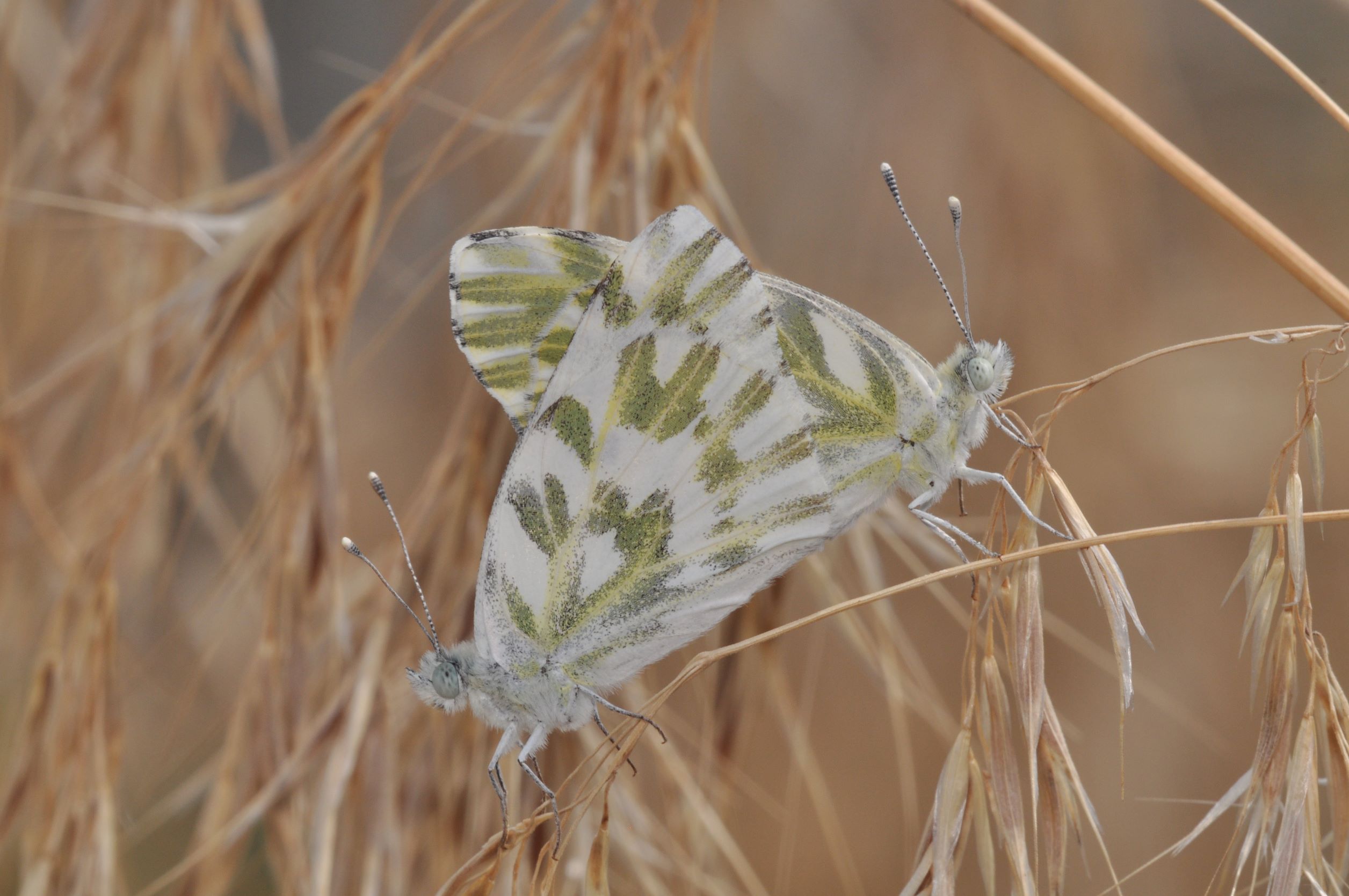
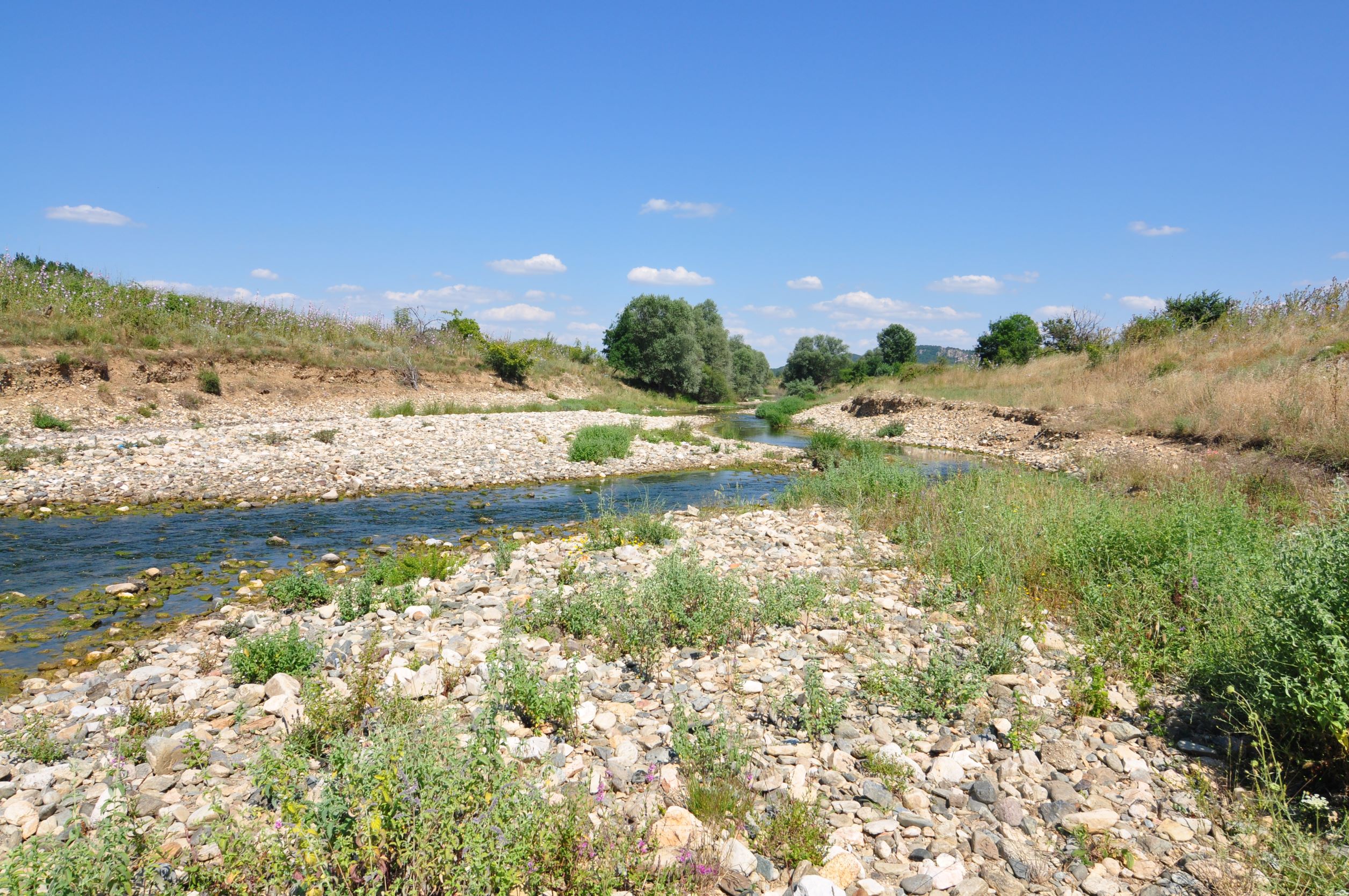 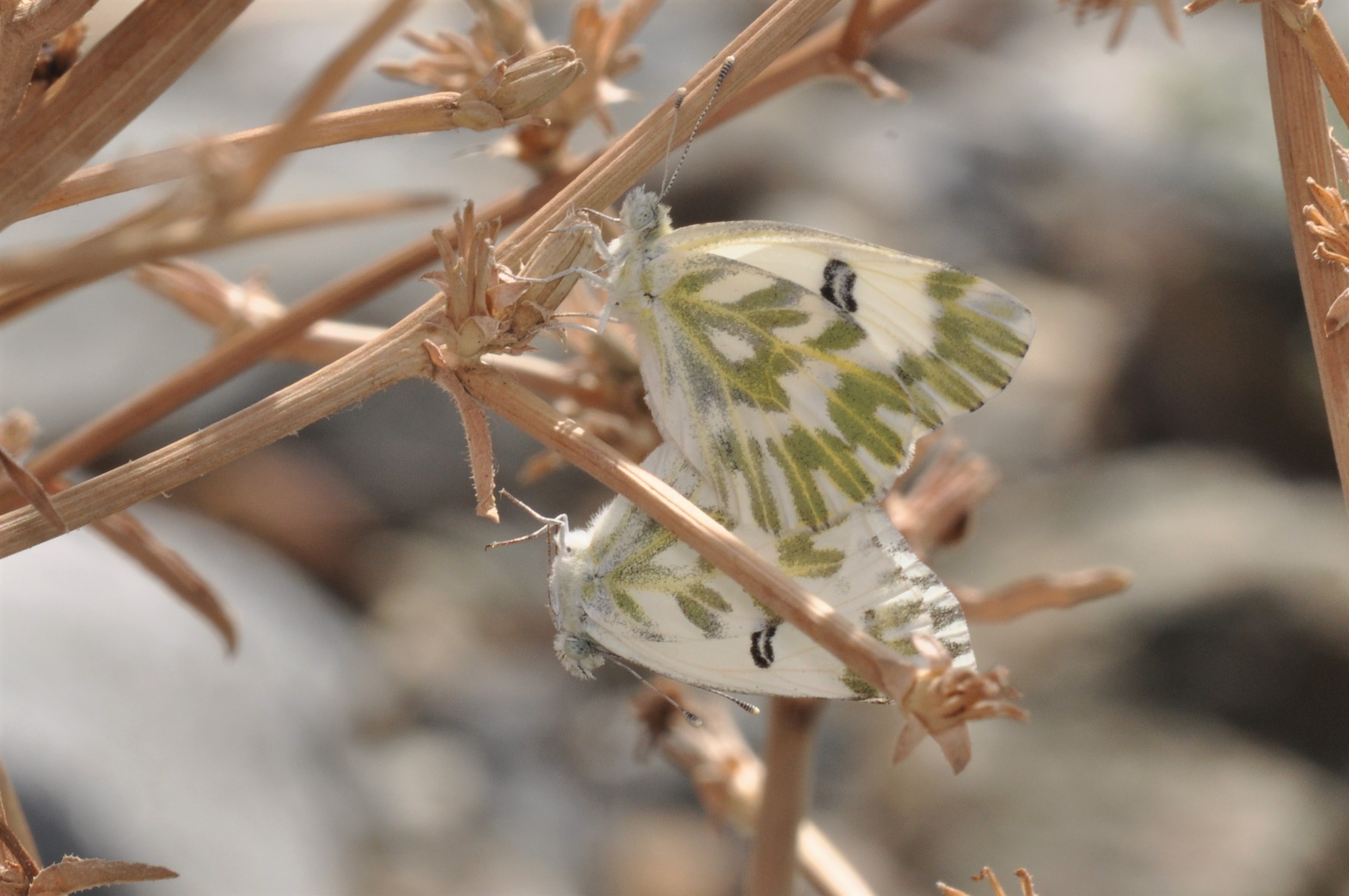 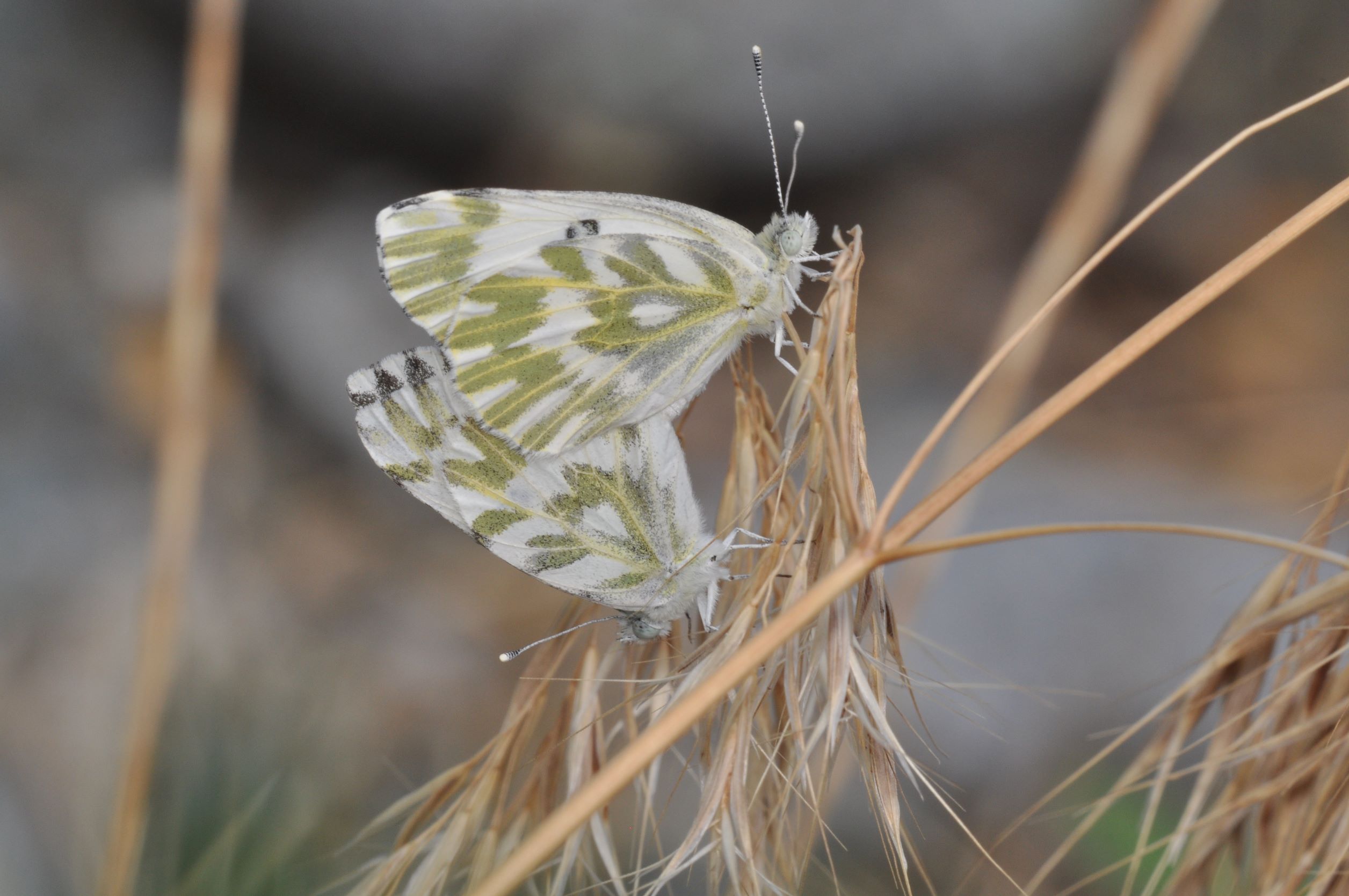
1a. Pontia chloridice, distribution map (09.i.2025).  Historical data ; Historical data ;  Additional data from the 2018 update ; Additional data from the 2018 update ;  New observations since the 2018 update. New observations since the 2018 update.
1b. Pontia chloridice copula. NMK (© Sylvain Cuvelier)
1c. Habitat of Pontia chloridice. Greece (© Sylvain Cuvelier)
1d. Pontia chloridice copula. NMK (© Sylvain Cuvelier)
1e. Pontia chloridice copula. NMK (© Sylvain Cuvelier)
Note
This species was mentioned only once from Albania by Rebel & Zerny (1931) from Orosh and is considered DD. The nearest areas with recent observations, are the Vardar Valley in southeastern NMK (Franeta et al. 2012) and the Greek administrative region of Central Macedonia (Pamperis 2009, Pamperis 2022). The species has two to three generations per year.
In Albania, the foodplant, Cleome ornithopodioides, has been reported from the village Haimel (Shkodër) at 10-50 m altitude and is probably also present in the valley of the Mat River. C. ornithopodioides is a very inconspicuous plant and thinking of stony river beds, it might be present in other places in Albania.
The species can be searched from early April till early autumn in lowland, stony river valleys with wide alluviums.
Description
♂♂
Medium size butterfly. Fw: 18-22 mm (first generation), summer generation slightly larger.
Ups: white gc.
Upf: ligth and reduced grey-black apical markings , line-shaped along the outer margin.
Uph: no markings.
Unf: discal spot not reaching costa, linear green apical markings.
Unh: marginal markings linear.
♀♀
Upf: more developed and contrasting black apical markings.
Uph: postdiscal and marginal markings present (spring generation) and well developed (summer generation).
Unh: marginal markings linear.
Similar species
Life cycle
Adults: two to three generations from April to September.
Egg: probably short stage.
Caterpillar: short stage.
Pupa: variable in function of season, short after first generation, long in aestivation and overwintering.
Habitat
Pontia chloridice mainly inhabits gravelly areas with scarce vegetation and is mainly found near rivers and streams, most in lowland but recorded up to 850 m a.s.l. in Greece.
Spatial requirement moderate, population density can be moderate, nomadic, can be found at considerable distances from the habitat.
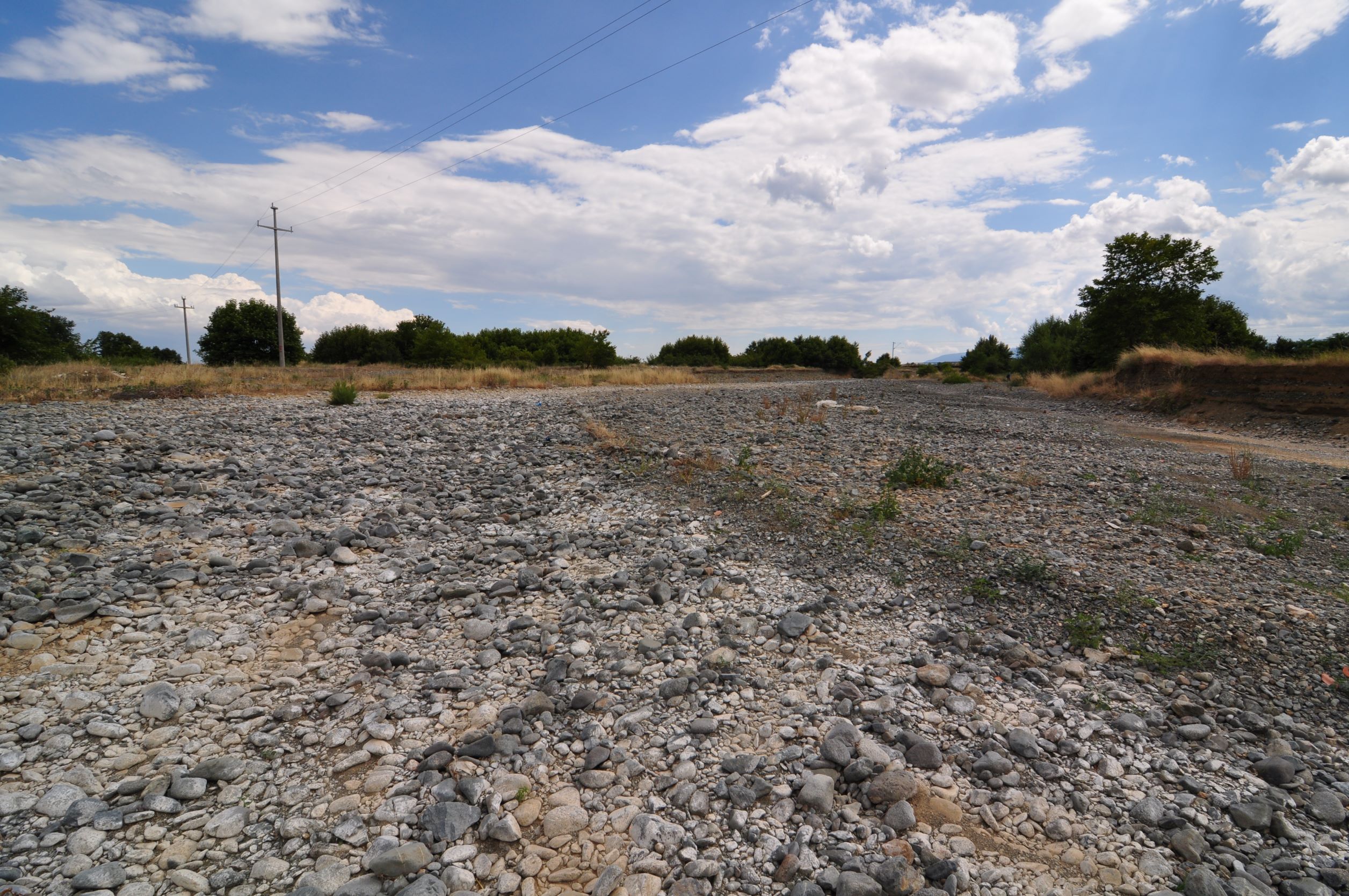 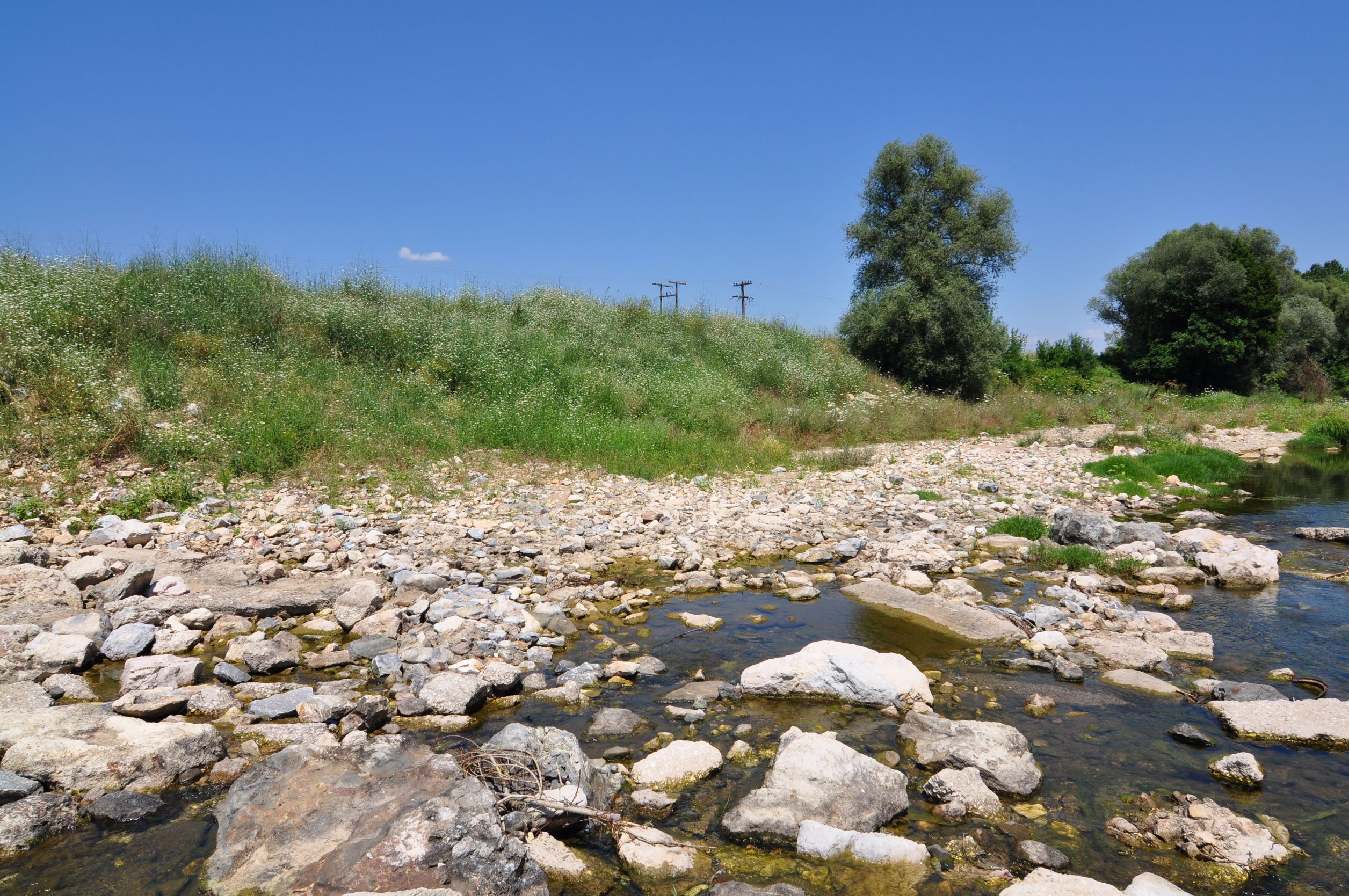
2a. Habitat of Pontia chloridice. NMK (© Sylvain Cuvelier)
2b. Habitat of Pontia chloridice. Greece (© Sylvain Cuvelier)
Foodplants
Caterpillars feed on Cleome ornithopodioides, also mentioned is Descurainia sophia.
Butterflies actively flying, rarely stopping for feeding.
Distribution
Albania: not recorded since Rebel & Zerny (1931).
Nearest locality: tributaries of the Vardar River (NMK)
Balkan: AL - BG - BIH - GR - HR - NMK - MNE - RKS - RO - SLO - SRB
Europe: IB - IT - ALP - BAL - NWE - UK - SCA - EEU
Asia Minor, Transcaucasia, Caucasus and further east.
Conservation status
Pontia chloridice is not endangered, very local in Balkans.
Albanian Red List: DD.
IUCN Red List, category at the Mediterranean level: LC.
Useful links
Pyrgus.de
Lepiforum
Euroleps
|
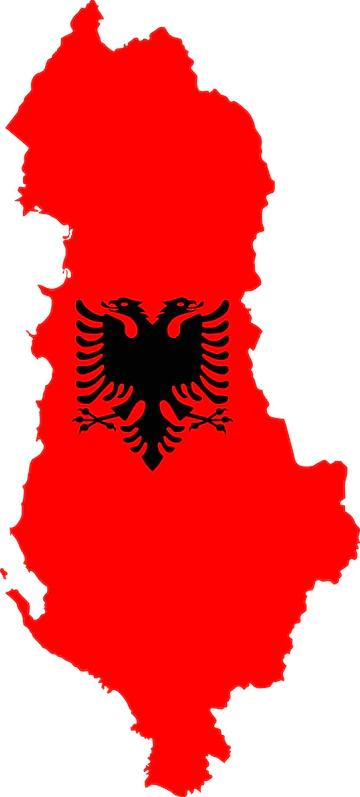 xx
xx 

 Historical data ;
Historical data ;  Additional data from the 2018 update ;
Additional data from the 2018 update ;  New observations since the 2018 update.
New observations since the 2018 update.